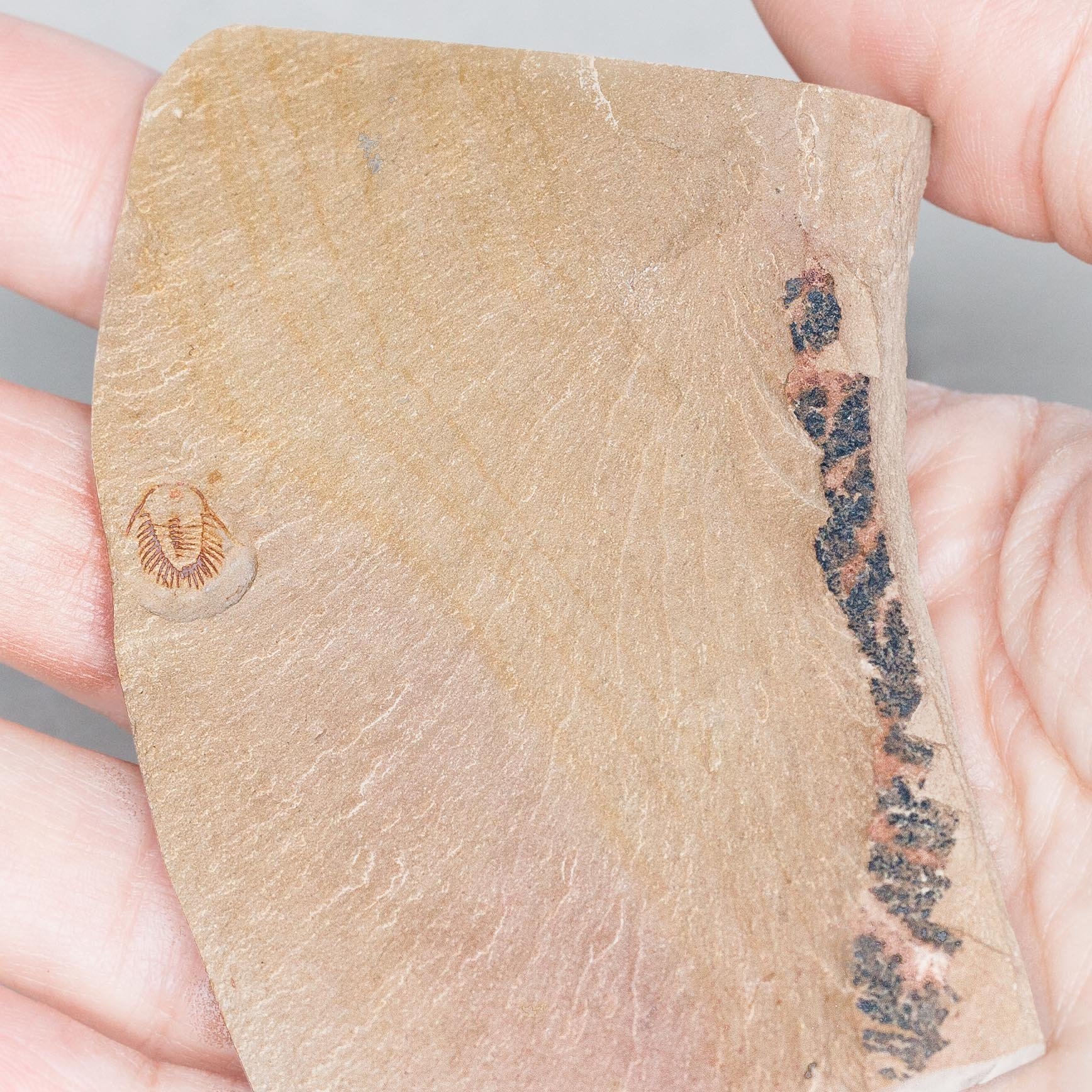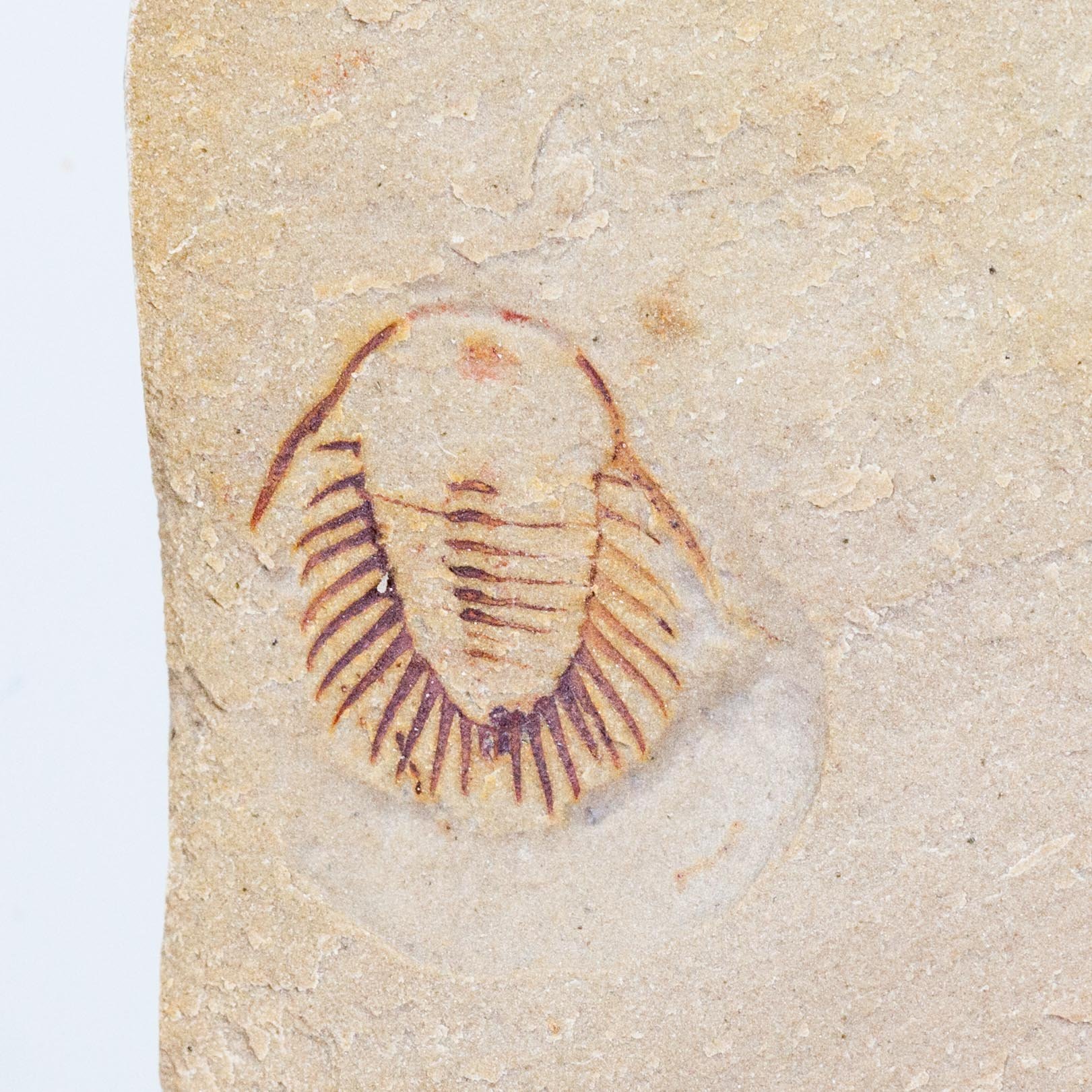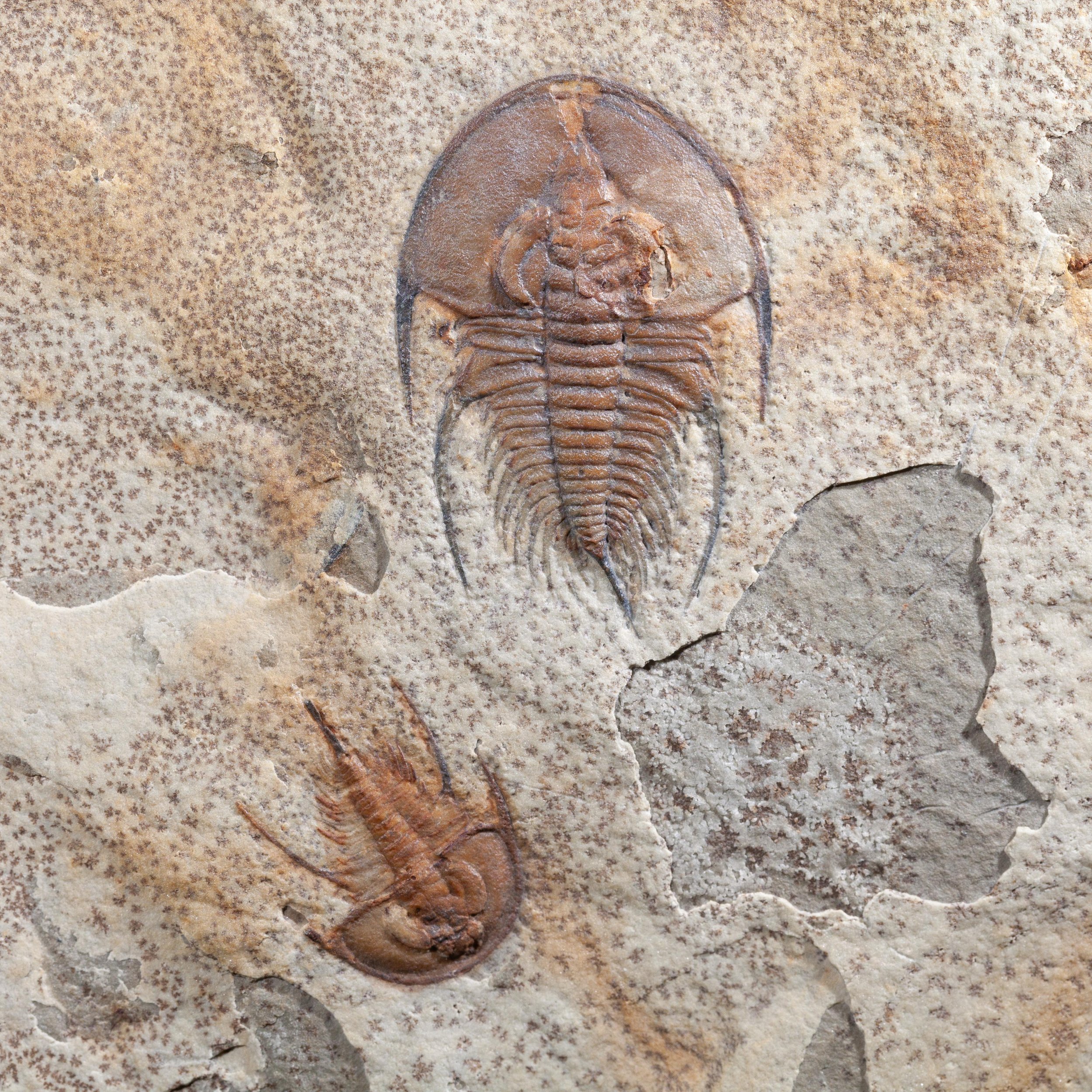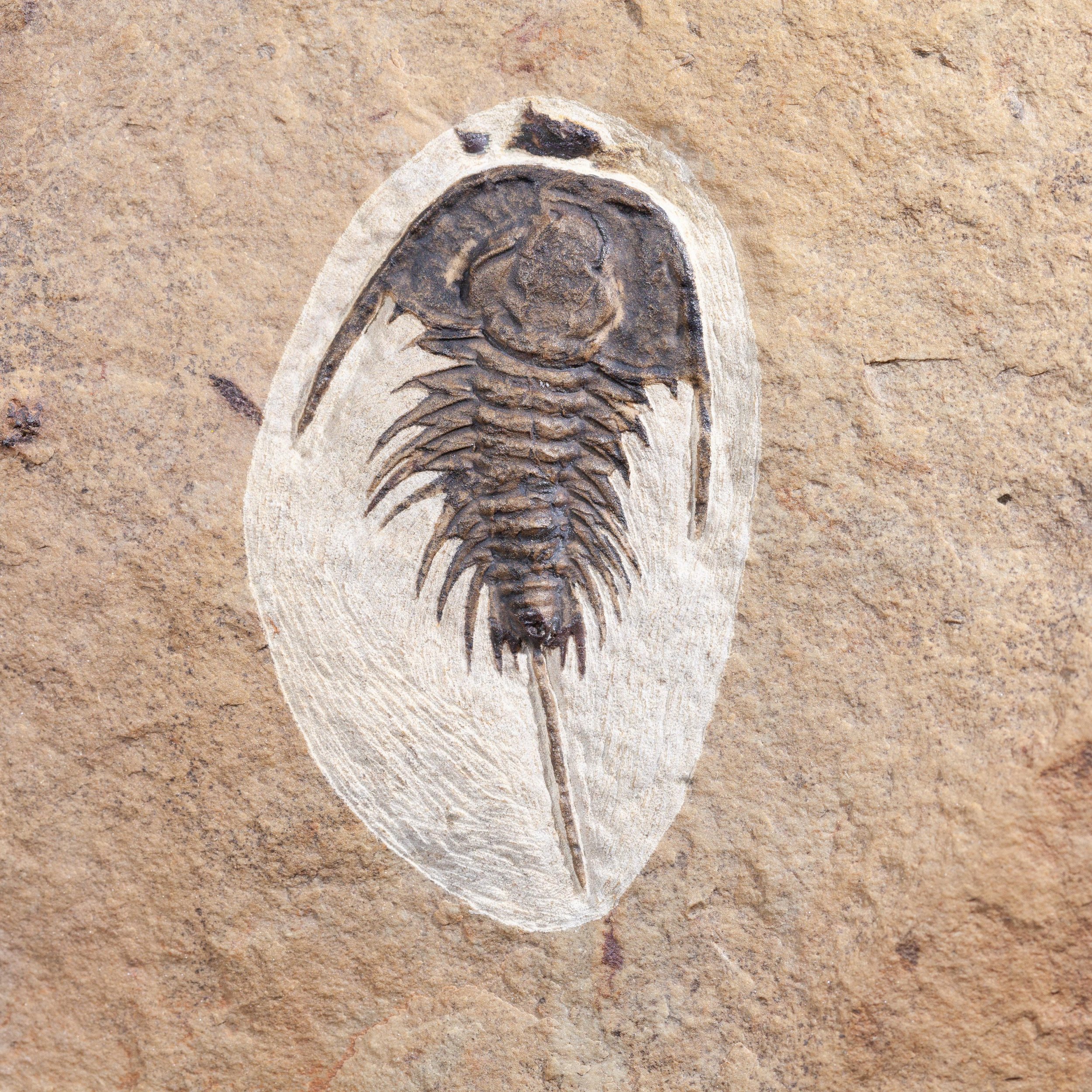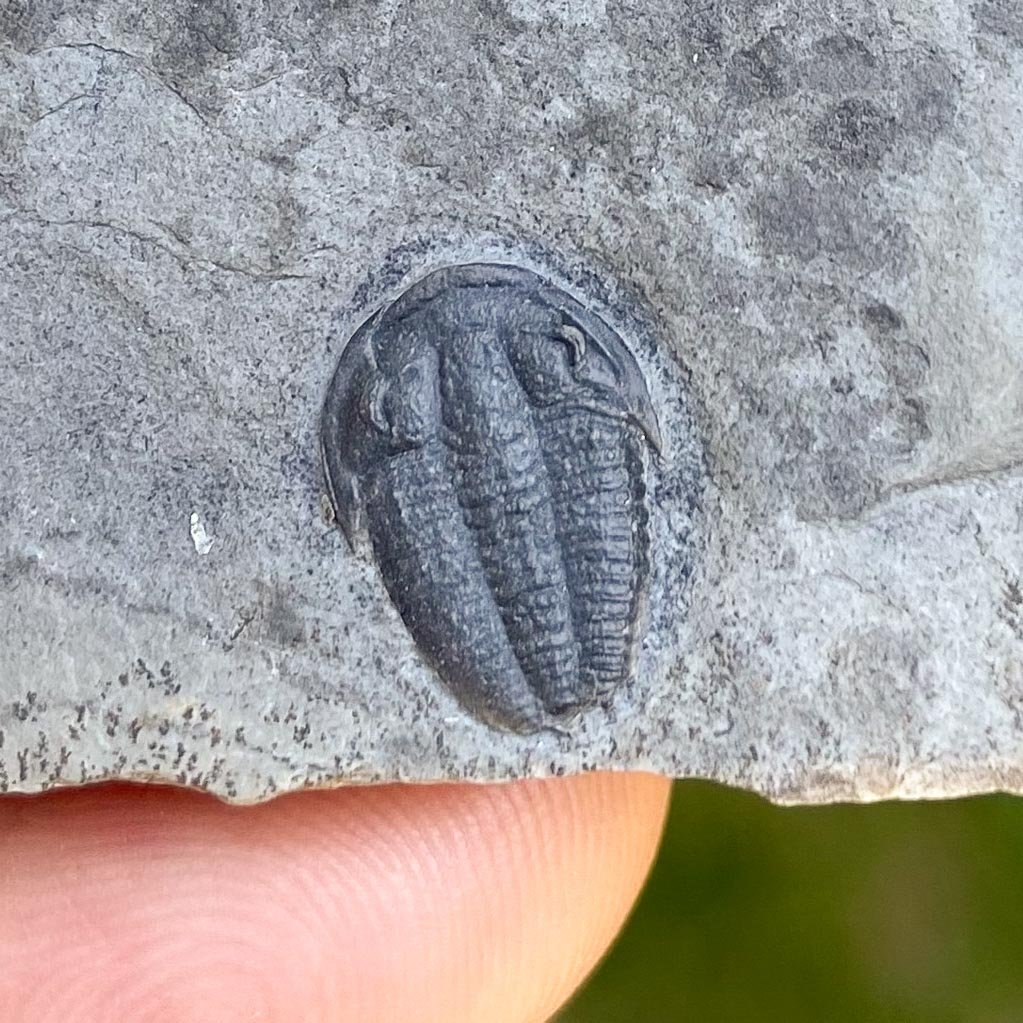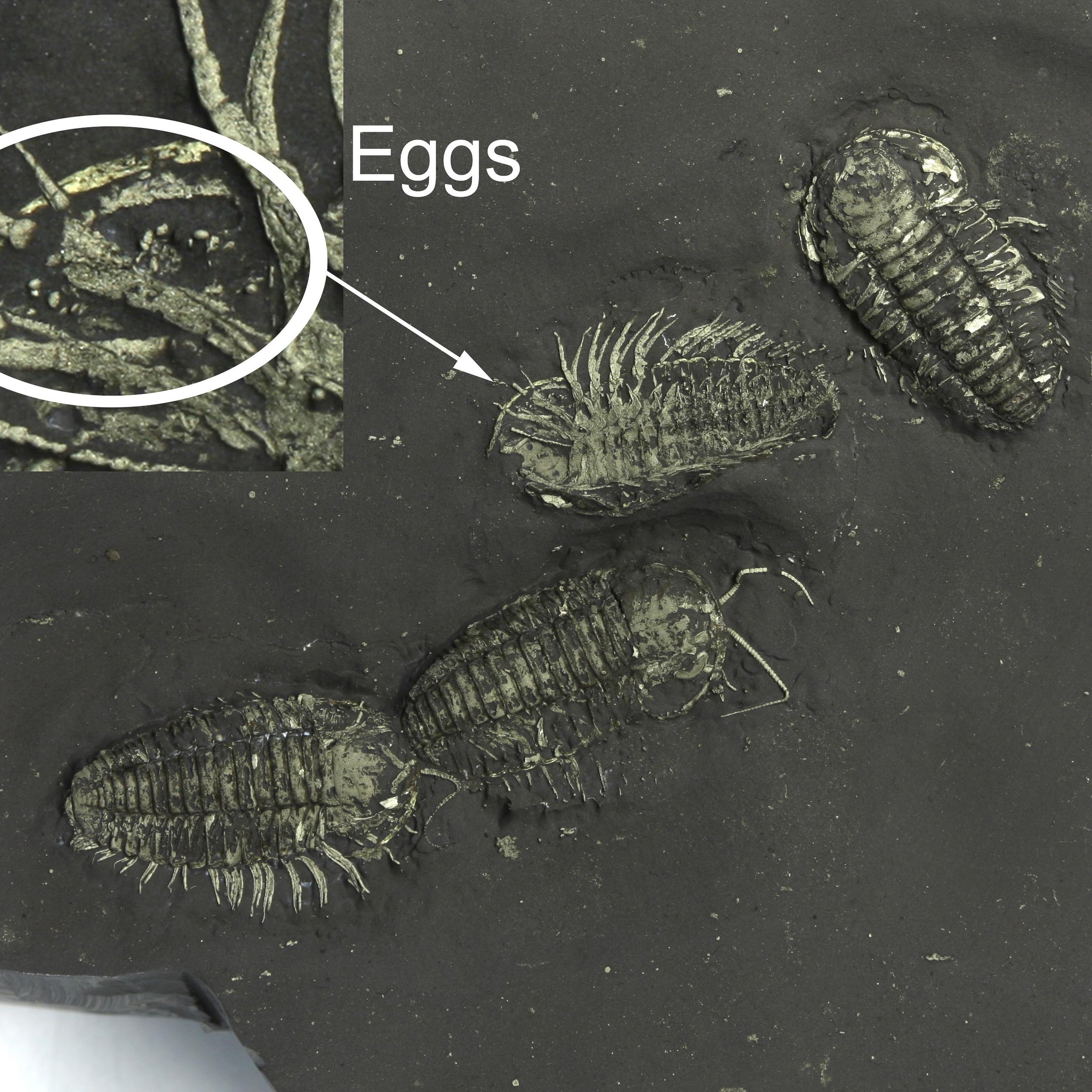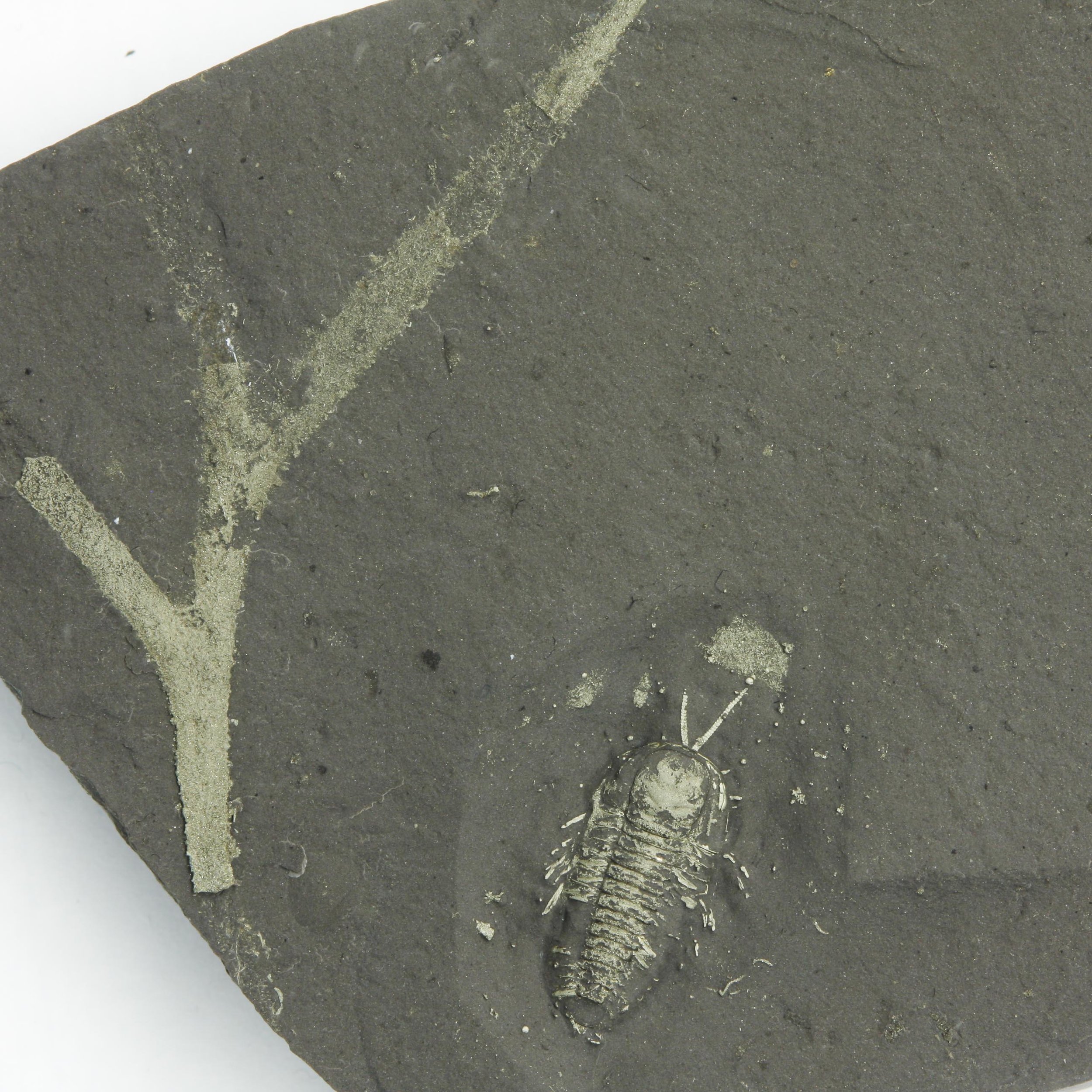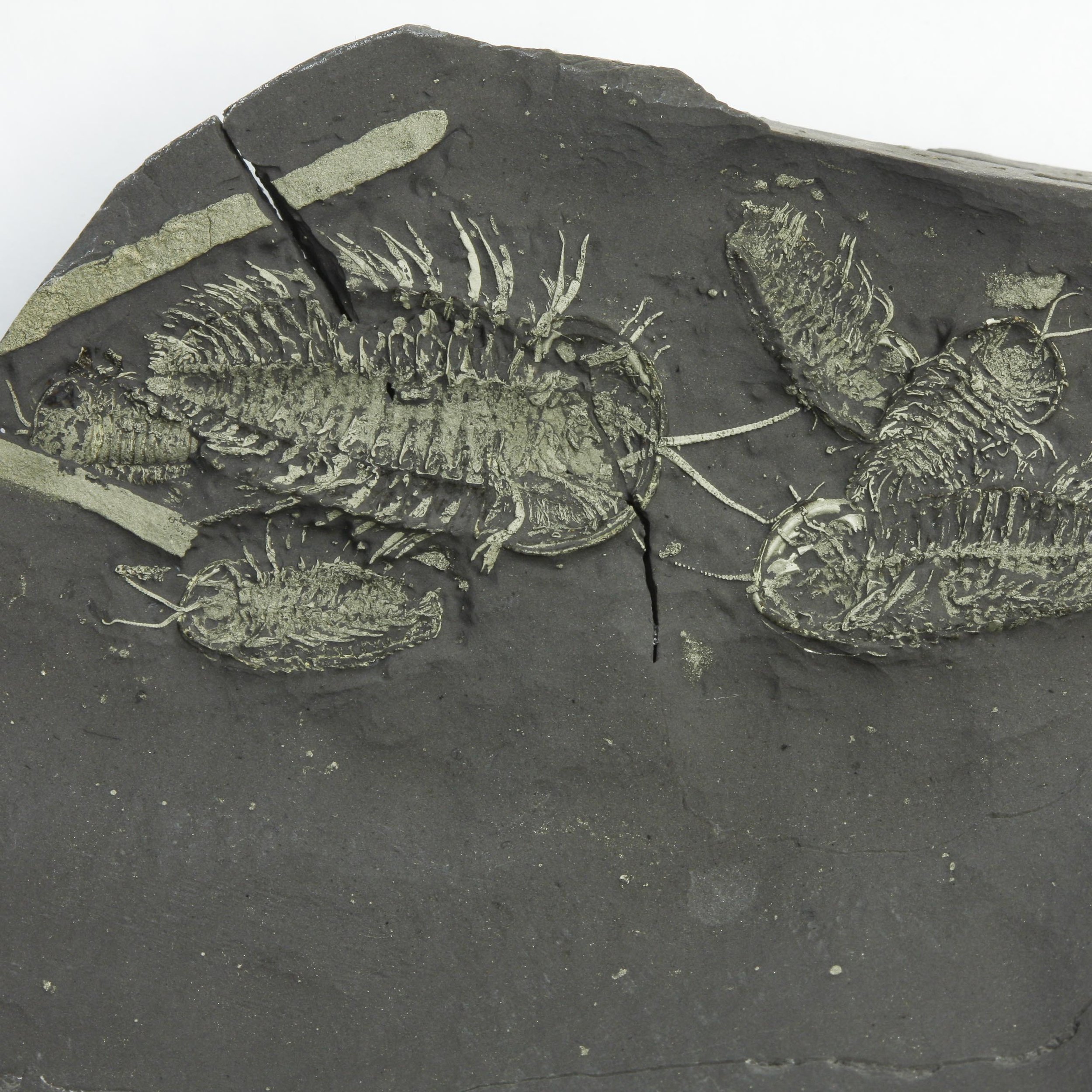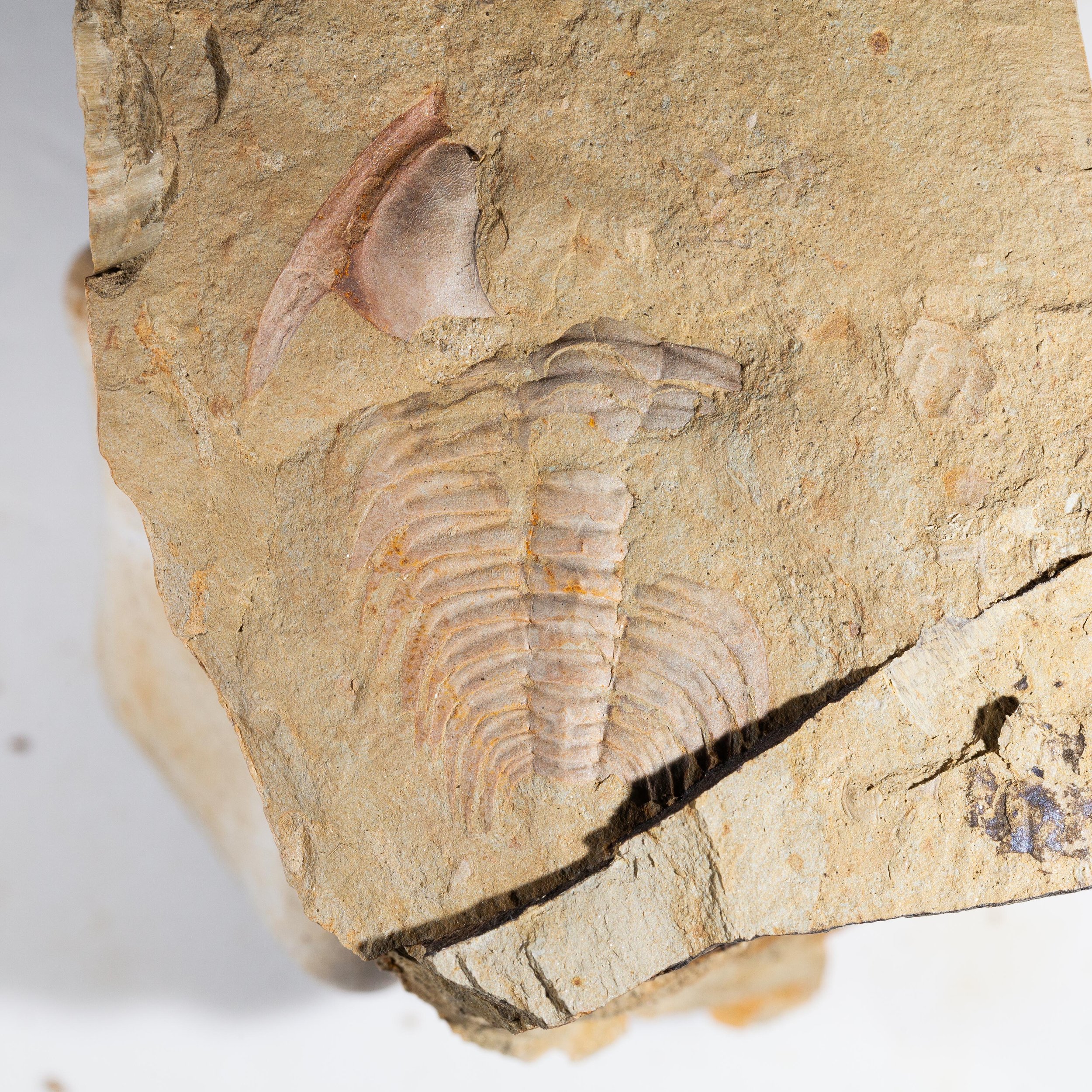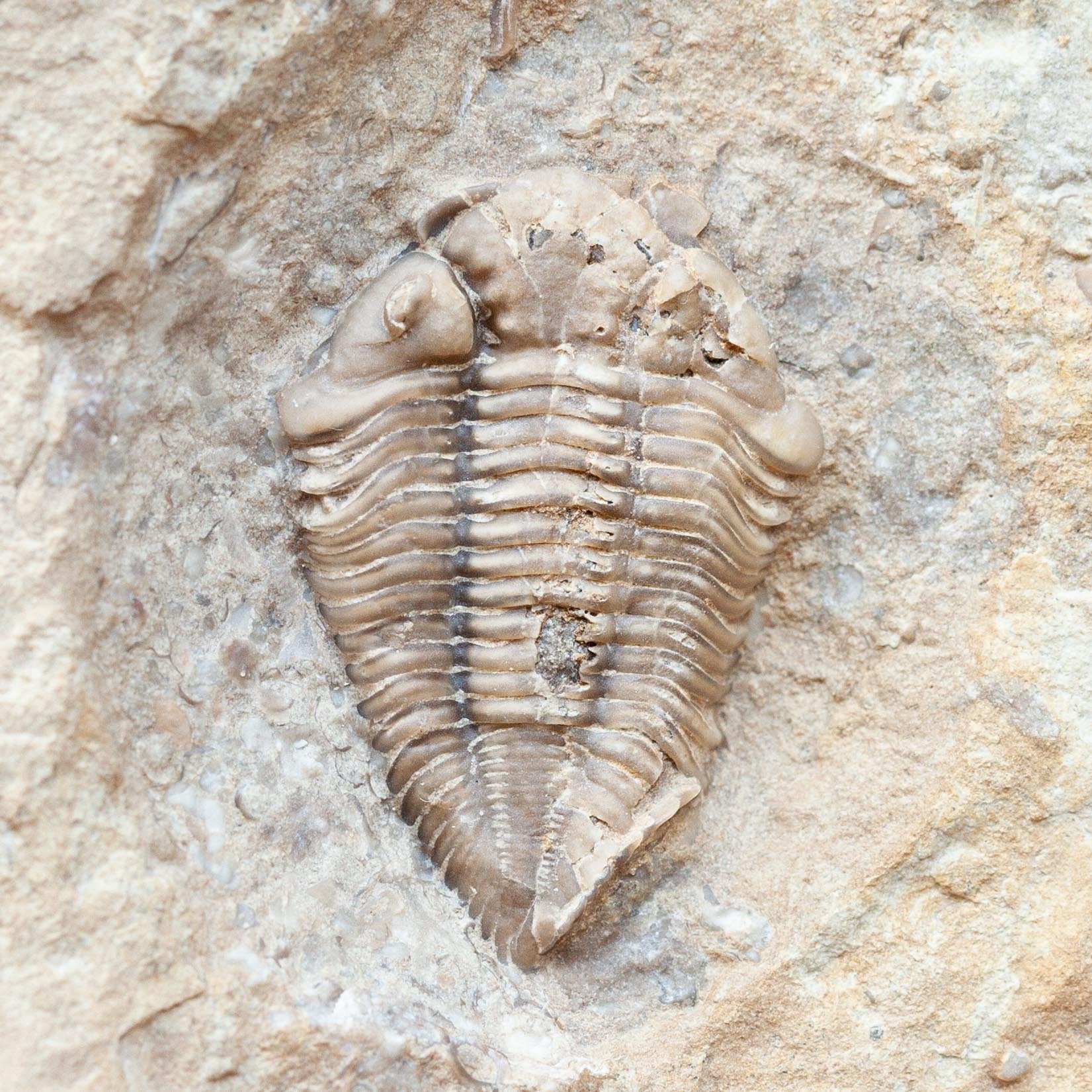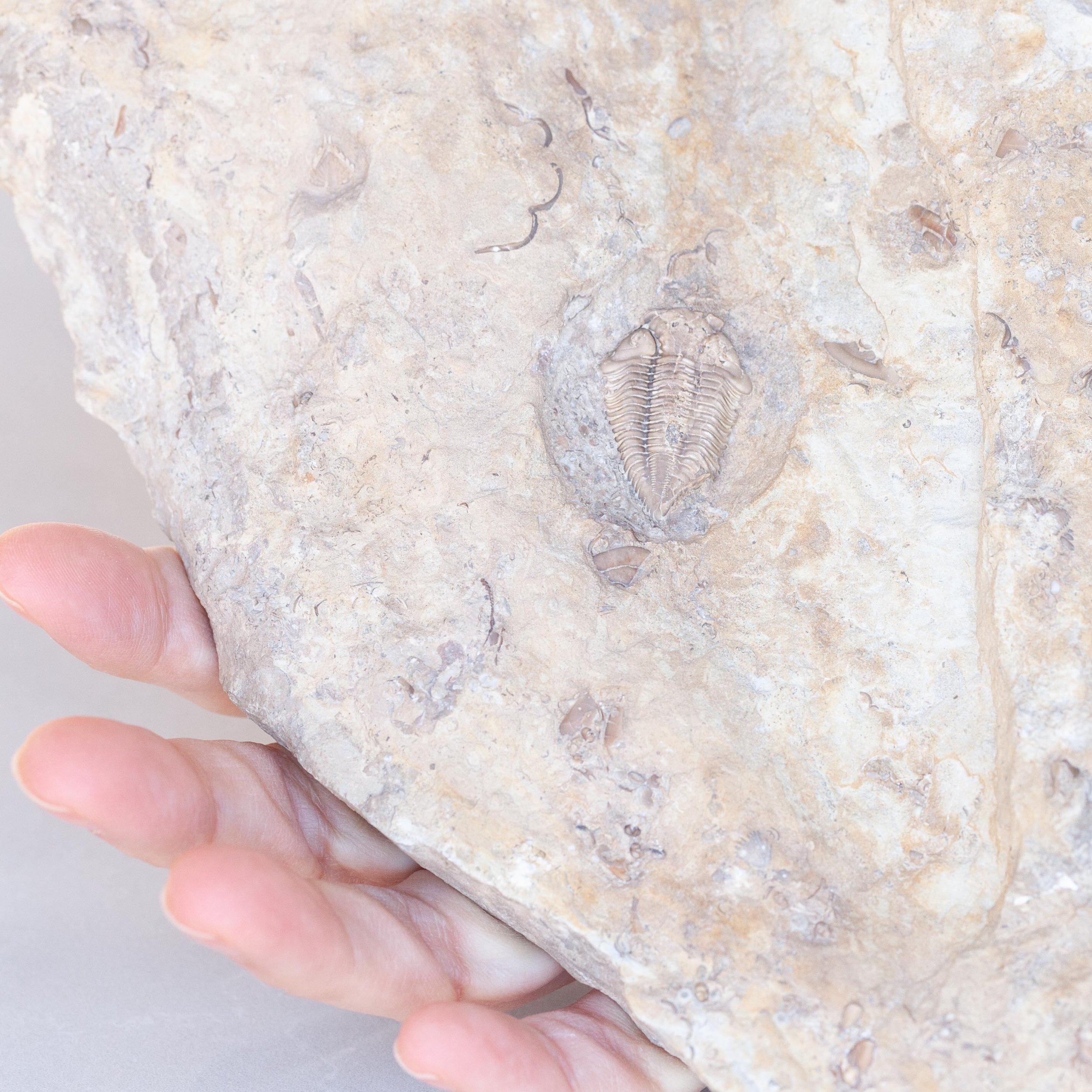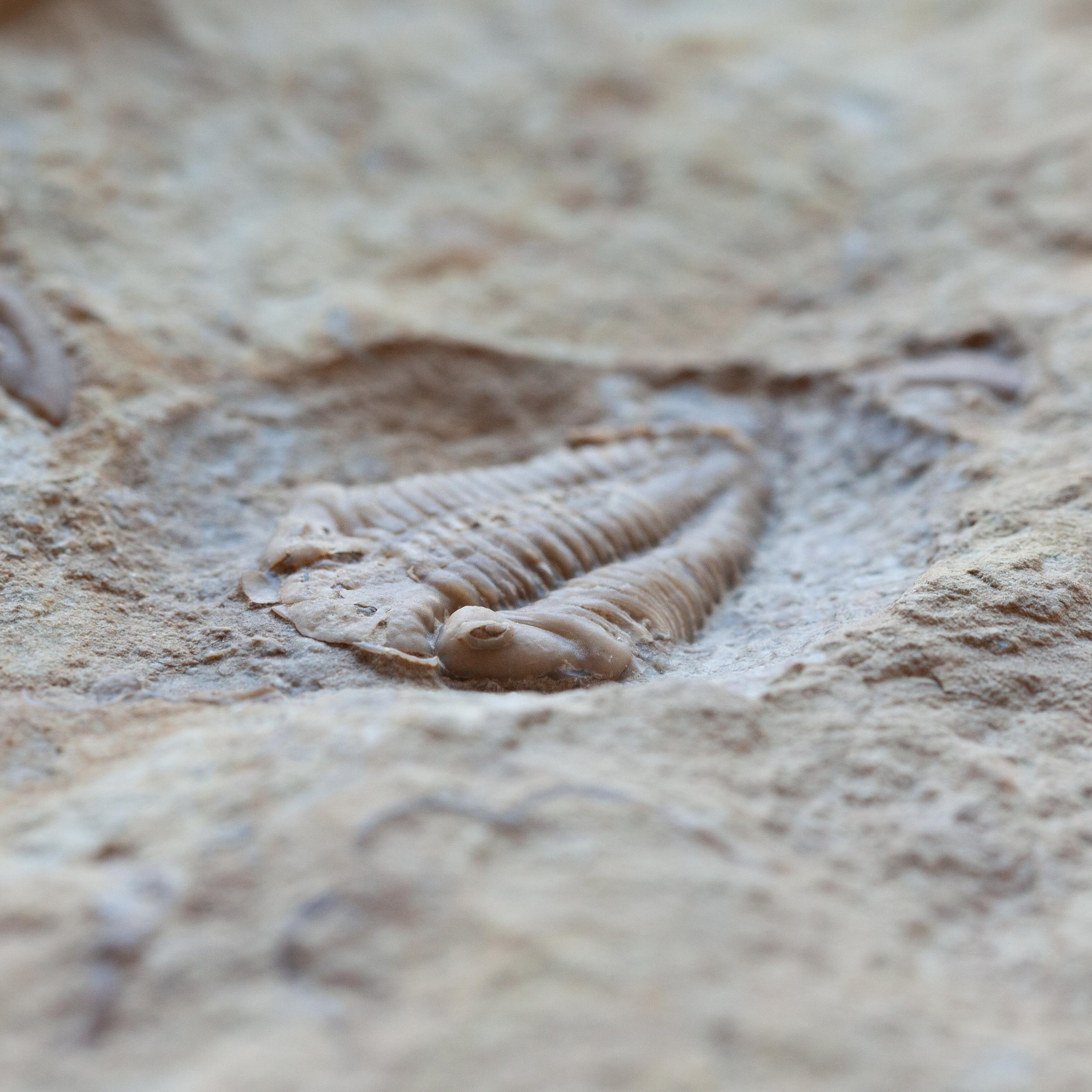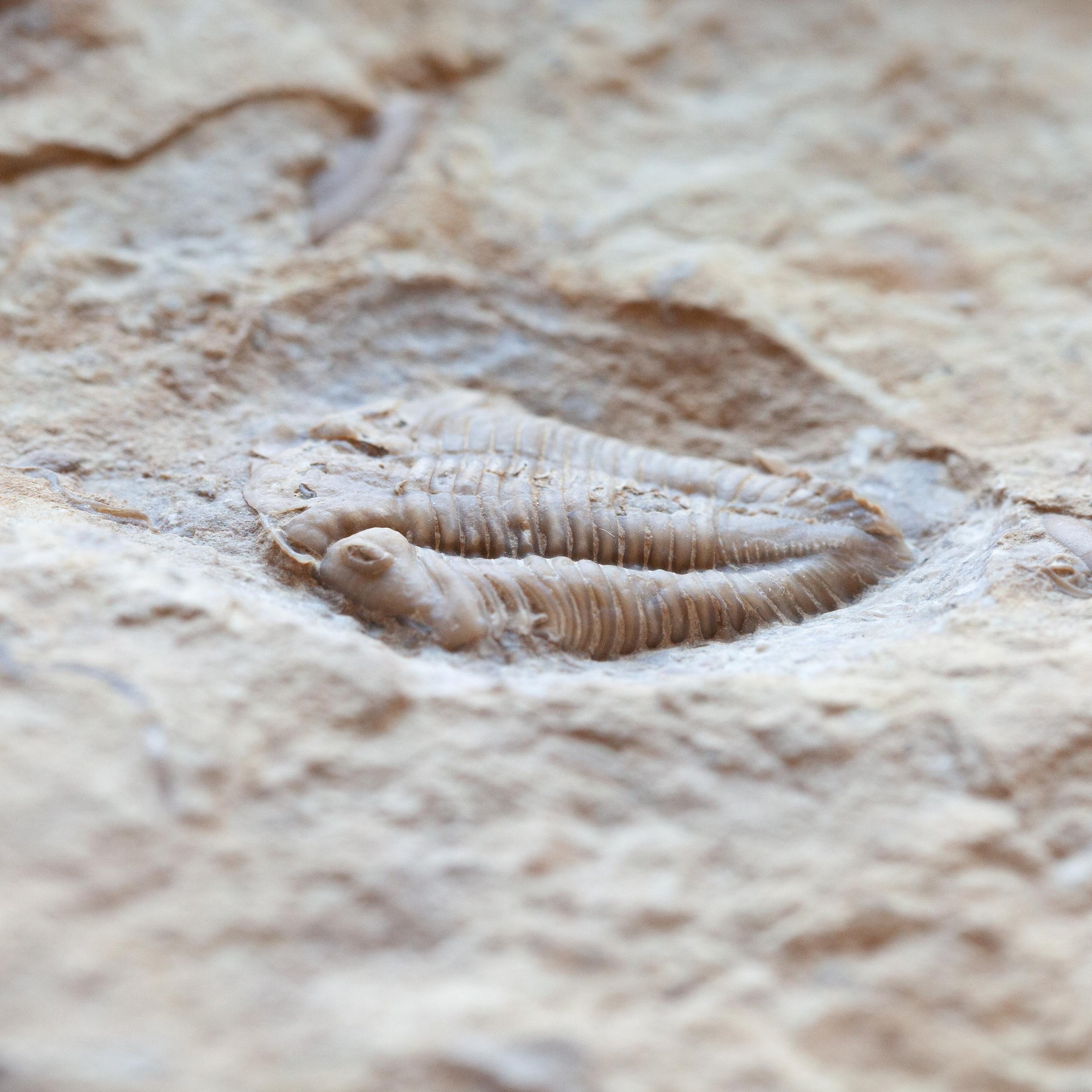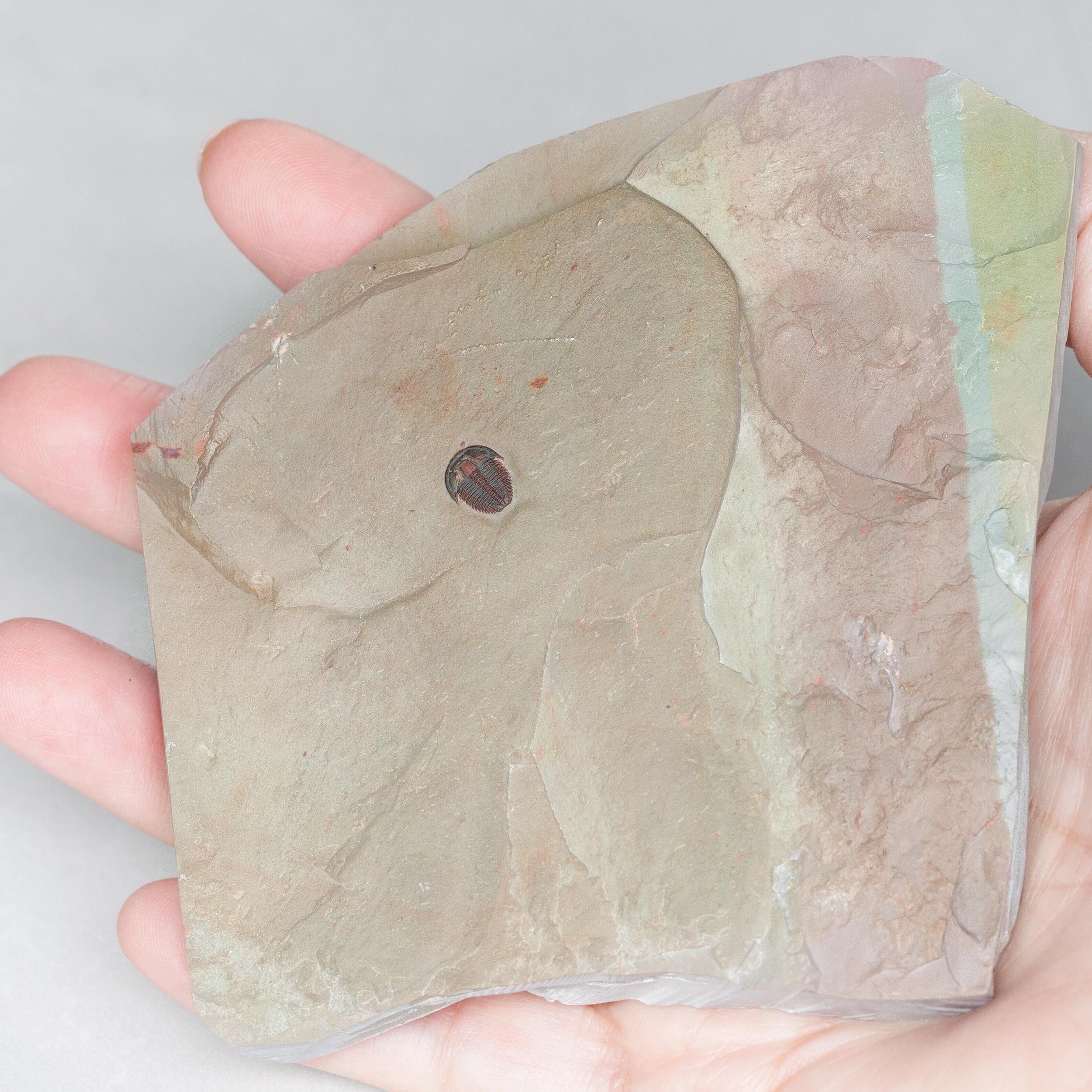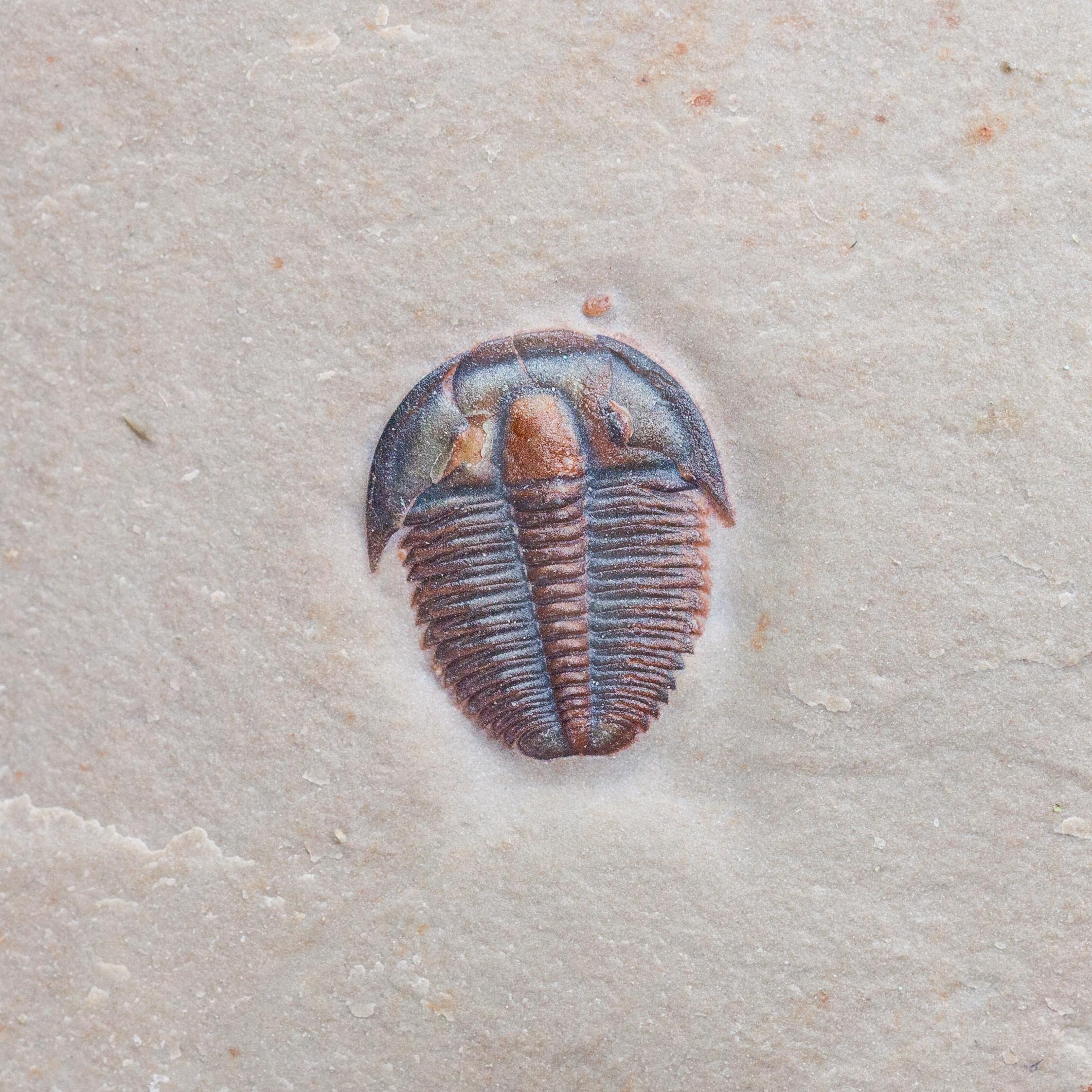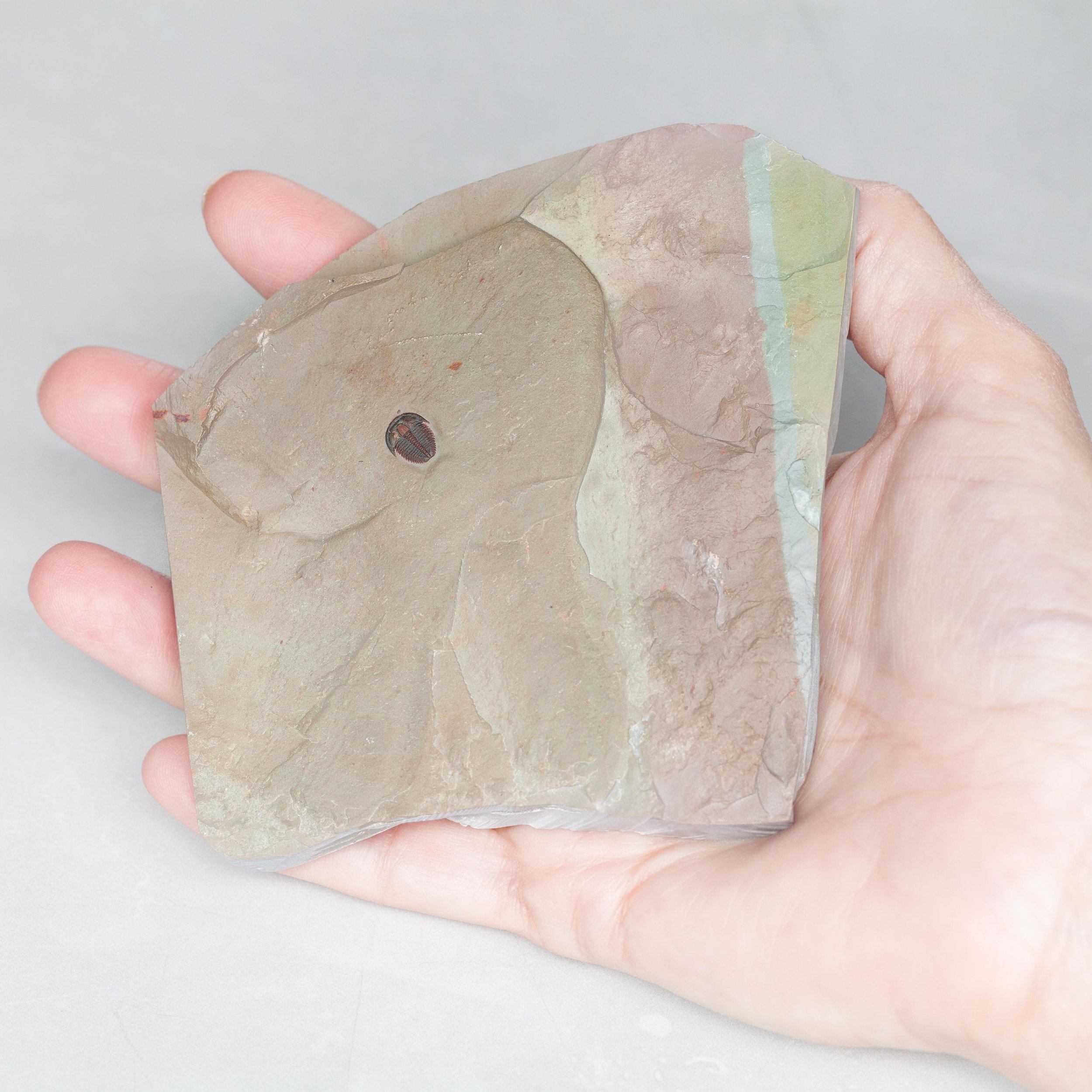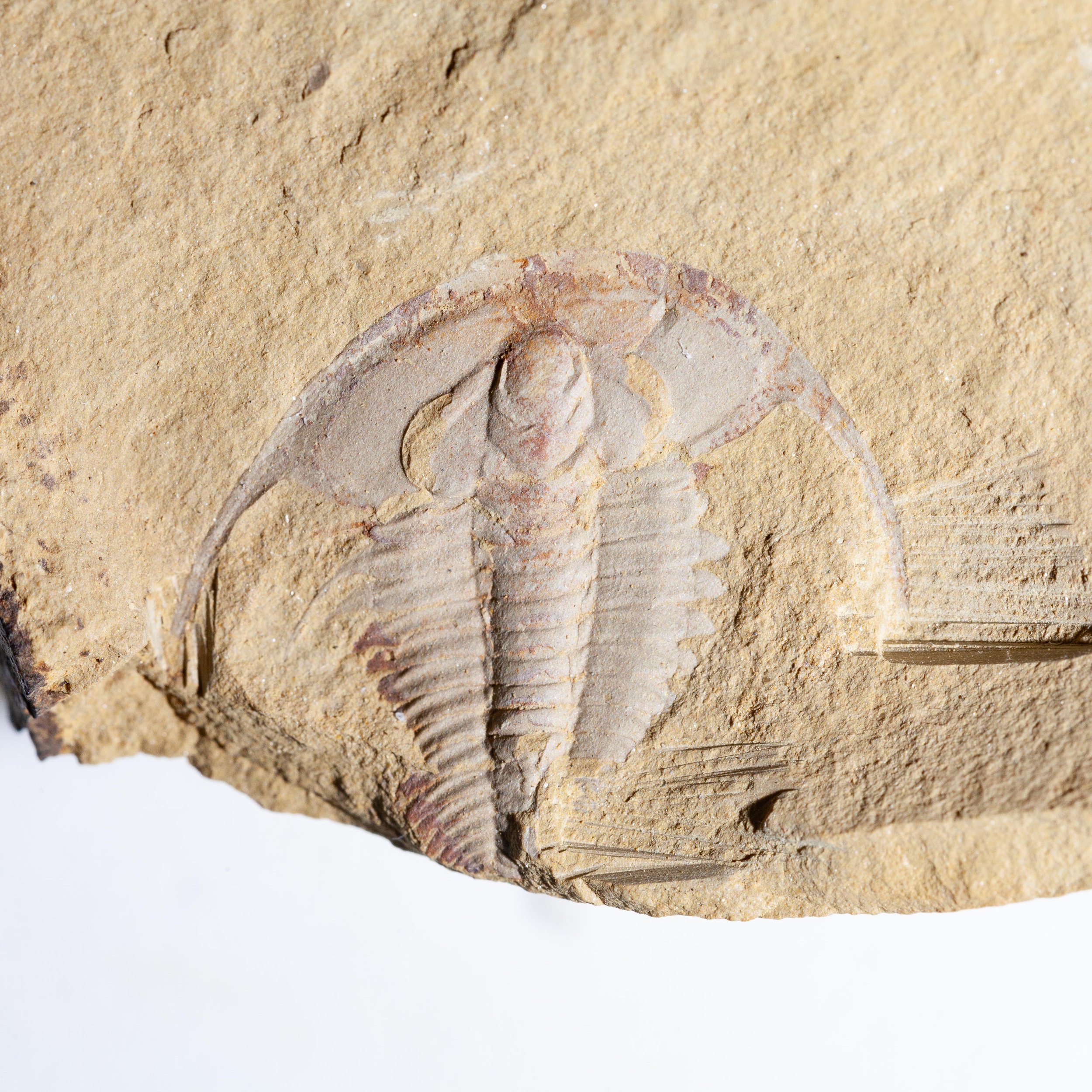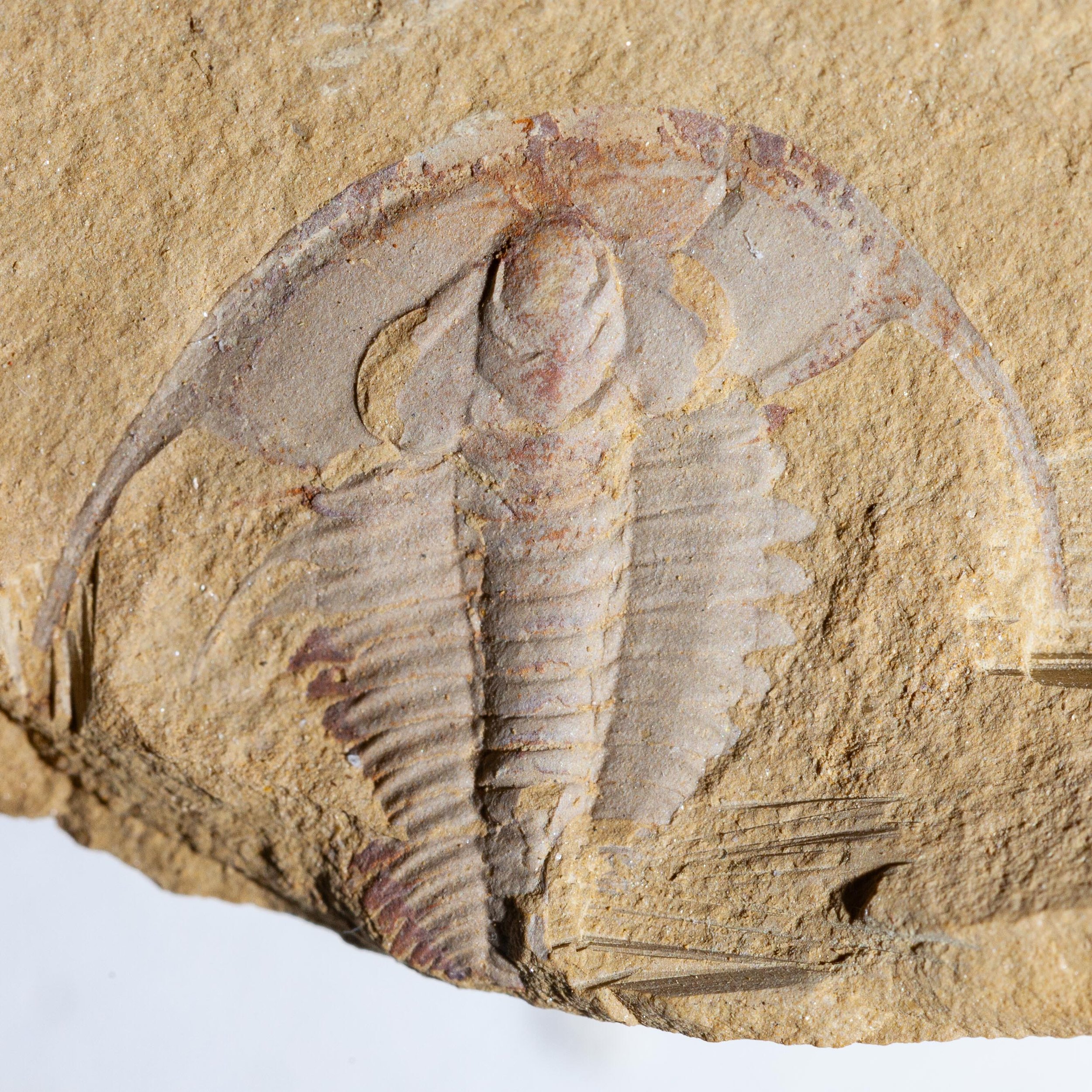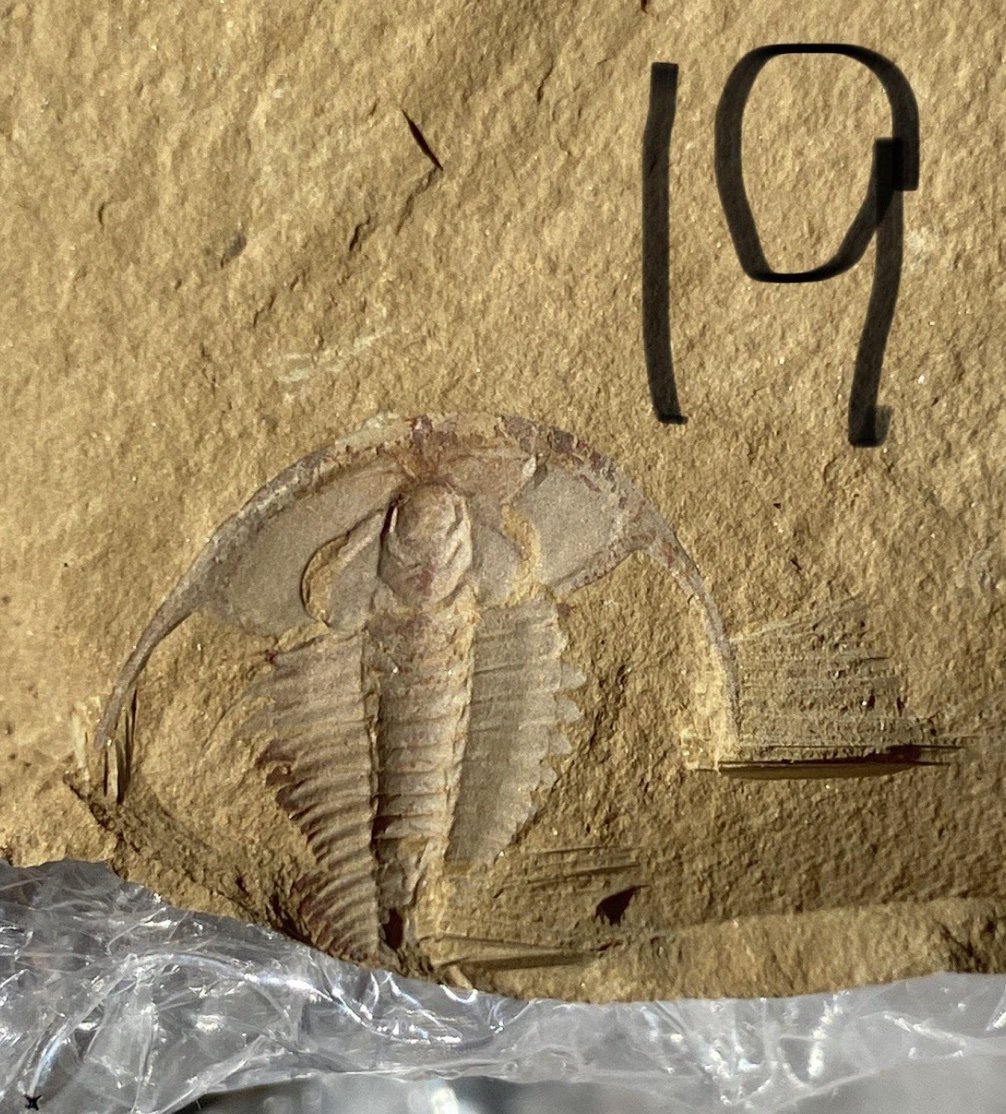Oryctocephalites palmeri
Vendor: Gold Bugs
SKU Number: SQ2321175
An uncommon Orytocephalites palmeri from the Lower Cambrian, Pioche Shale of Nevada.
This specimen appears to have faint antennae traces! This rare Corynexochid trilobite occurs with Olenellus fauna trilobites and is almost always found upside down.
Oryctocephalites is a very small species, rarely reaching more than one cm in length. This specimen is well defined in red with complete spines and a visible hypostome.
Full dimensions are listed below.
Vendor: Gold Bugs
SKU Number: SQ2321175
An uncommon Orytocephalites palmeri from the Lower Cambrian, Pioche Shale of Nevada.
This specimen appears to have faint antennae traces! This rare Corynexochid trilobite occurs with Olenellus fauna trilobites and is almost always found upside down.
Oryctocephalites is a very small species, rarely reaching more than one cm in length. This specimen is well defined in red with complete spines and a visible hypostome.
Full dimensions are listed below.
Vendor: Gold Bugs
SKU Number: SQ2321175
An uncommon Orytocephalites palmeri from the Lower Cambrian, Pioche Shale of Nevada.
This specimen appears to have faint antennae traces! This rare Corynexochid trilobite occurs with Olenellus fauna trilobites and is almost always found upside down.
Oryctocephalites is a very small species, rarely reaching more than one cm in length. This specimen is well defined in red with complete spines and a visible hypostome.
Full dimensions are listed below.
Additional Information
The Pioche Shale is an Early to Middle Cambrian Burgess shale-type Lagerstätte in Nevada that preserves arthropods and worms similar to the Burgess Shale.
In the Eureka area, the Pioche has a variable lithologic character which is most commonly a greenish or grey, calcareous or micaceous shale which may locally be reddish or brown in color with abundant trilobite parts throughout the formation.
Oryctocephalids generally occur in open shelf deposits around the margins of equatorial paleocontinents (Whittington, Reference Whittington1995; Sundberg and McCollum, Reference Sundberg and McCollum1997). Most species are preserved in a compacted state in shale; occurrences of noncompacted specimens—e.g., in carbonate facies—are comparatively rare (Rasetti, Reference Rasetti1951, Reference Rasetti1957; Sundberg, Reference Sundberg1994; Whittington, Reference Whittington1995; Sundberg and McCollum, Reference Sundberg and McCollum1997, Reference Sundberg and McCollum2003a, Reference Sundberg and McCollumb; Yuan et al., Reference Yuan, Zhao, Li and Huang2002; Korovnikov and Shabanov, Reference Korovnikov, Shabanov and Budnikov2008; Shabanov et al., Reference Shabanov, Korovnikov, Pereladov, Pak, Fefelov and Budnikov2008a, Reference Shabanov, Korovnikov, Pereladov, Fefelov, Rozanov, Varlamov, Parkhaev and Pakb; Sundberg, Reference Sundberg2014, Reference Sundberg2018). Compaction of the trilobite exoskeleton results in deformation of morphological characters (e.g., Webster and Hughes, Reference Webster and Hughes1999; Esteve, Reference Esteve2014; Webster and Bohach, Reference Webster and Bohach2014; Webster, Reference Webster2015) that can be important to identification (e.g., Hughes, Reference Hughes1993, Reference Hughes1995; Whittington, Reference Whittington1995).
References:
Pioche Shale
intraspecific variation - Oryctocephalites palmeri

